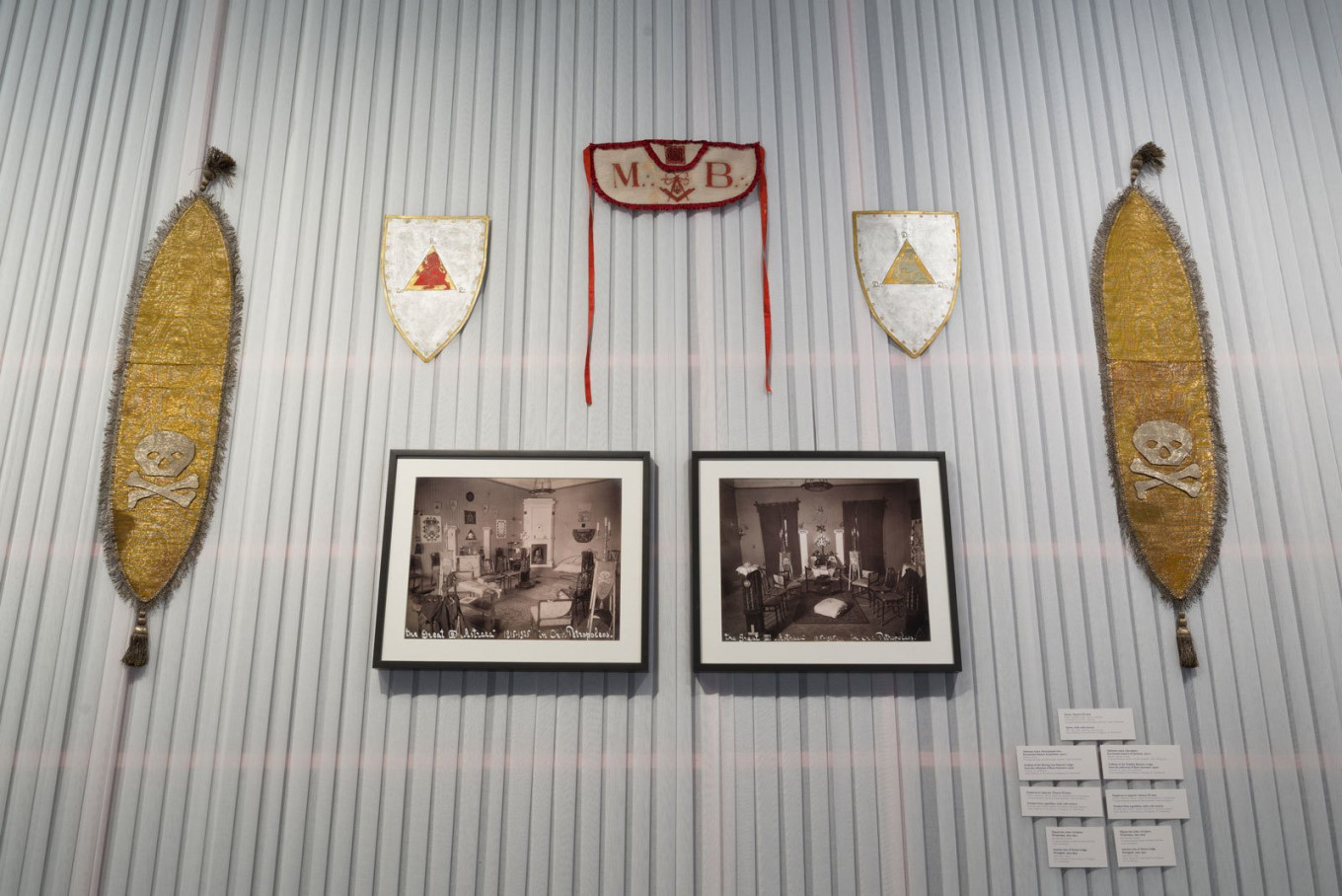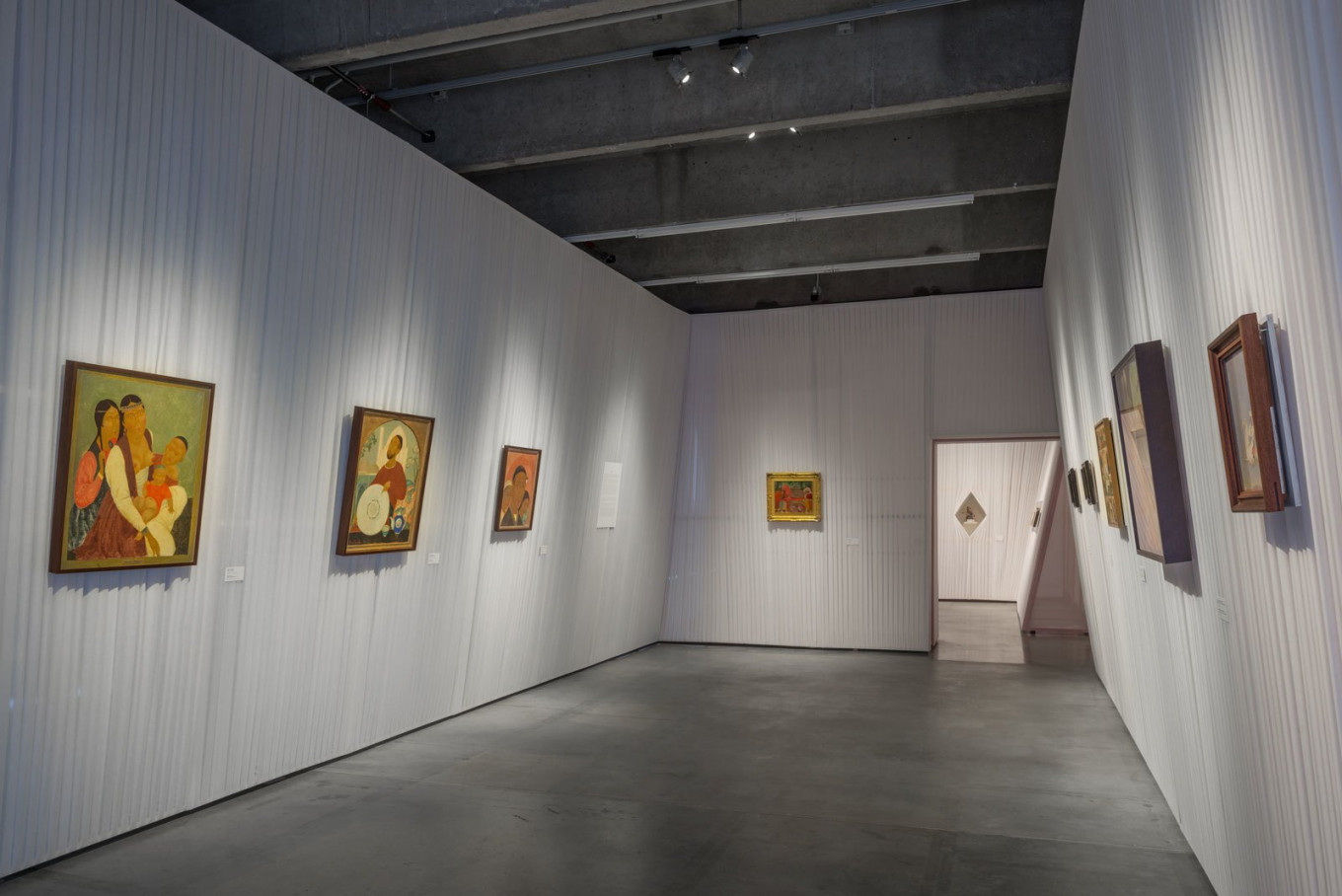Garage Museum of Contemporary Art is almost just as famous for its architecture as its art; first housed in a disused public bus garage from the 1920s, now it is in a former Soviet café in the middle of Gorky Park, an iconic cuboid of steel, glass and sharp corners. This famously austere space, however, is rendered almost unrecognizable from inside this exhibition. The airy industrial-chic exhibition halls are transformed into tented interiors with sloping fabric walls. Pleated white cotton curtains envelop each room with diaphanous veils which crest in vaulted ceilings, cocooning the space and changing the atmosphere into one of hushed, quiet contemplation.
The effect is ideal for an exhibition which explores Russian art through the lens of spiritualism. The exhibition We Treasure Our Lucid Dreams; the Other East and Esoteric Knowledge in Russian Art 1905-1969 illuminates a secret history and sheds light on a subculture which has been routinely overlooked in the story of Russian modernism. The technocratic, machine-age aesthetic of Soviet industry has long been accepted as the dominant trend of Russian cultural life in the first half of the twentieth century. This exhibition tells a different story; the curators here claim that mysticism, esotericism, and the occult were all influential and enduring trends, albeit overshadowed by the weight of Soviet clichés.
The exhibition is not the work of a single curator, but of a huge research team, who spent several years digging through public and private archives for materials which bear witness to a forgotten — or perhaps consciously hidden — period of Russian cultural life. Over 150 works of art, historic artefacts and archival documents are amassed in support of their new narrative. Lead curators Yekaterina Inozemtseva and Andrei Miziano describe their project as “laying down an alternate history of Russian art beyond the canon of modernism.” Arguing for a connection between periods of socio-economic crisis and spiritual exploration, they claim that the First World War and the Russian Revolution both “pushed artists, writers and intellectuals towards greater interest in their spiritual journeys.”
The first part of the show explores Russia’s Silver Age, the fin-de-siècle flowering of creativity which gave rise to the Symbolist movement. This period is well known to have been heavily influenced by spiritualism, but the works on show here illuminate just how wide-ranging and multi-faceted engagement with the occult was. In doing so, it reassesses its impact on some of the major figures of Russian literature, including the Symbolist poet Andrei Bely, whose work is quoted in the exhibition’s title. Rarely seen documents are on display which demonstrate Bely’s involvement with anthroposophy, an esoteric philosophy developed by Rudolf Steiner in the late nineteenth century.

Bely is proved to have been a painter as well as poet, the author of a series of ‘meditation drawings’ and spiritual diagrams made while studying under Steiner. He was not an outlier in these pursuits; the sheer scope and range of spiritualist activity in Russia at this time is proved by a wide display of objects and artefacts from secret societies, such as the Moscow Spiritualist Circle. Tarot cards, automatic drawings, and abstract photographs taken during spiritual séances all demonstrate the frenzied enthusiasm for clairvoyance which captivated Russian society at the start of the twentieth century.
The exhibition then moves on to the Soviet period and considers the fate of spiritualism under Stalin. This, again, is the result of forensic research through historic documents, much of it taken from the KGB archives. Secrecy of any sort was deemed anti-Soviet, and its suppression was widespread; on display are newly unearthed materials which show the full extent of this. Investigative files, arrest warrants and collected criminal proceedings all bear witness to the fates of participants and practitioners of esoteric movements. In some of these, the researchers have succeeded in restoring, for the very first time, biographies thought to have been lost. This includes establishing the fate of Rimma Nikolayeva, an artist and member of the anthroposophical community, who was executed by the NKVD in 1937.
Stalin did not, however, succeeded in stamping out all traces of spiritualism and mysticism. The curators claim that Soviet artists instead moved eastwards, finding a ‘spiritual renaissance’ as they turned for inspiration to Central Asia. It shows works by artists including Daniil Stepanov, who moved to Uzbekistan in the 1920s and made paintings inspired by motifs and traditions to the region. Eastern mysticism is shown to also have been influential to a new trend in organic art, as evidenced by paintings of dramatic skyscapes and sculptures from tree roots by practitioners such as Sergei Kalmykov and Isaac Etkind.

Inozemtseva and Miziano emphasise that “this is not a typical exhibition for us. [Garage is] a museum of contemporary art and this exhibition consists almost entirely of historic materials.” Woven throughout this historic retelling, however, are responses by contemporary artists. These include a schedule of performances including dance practices by Dutch-Swiss artist Martje Brandsma, who interprets Steiner’s school of eurythmy in a new choreography. Integrated amongst the exhibits are also three works commissioned from conceptual artist Alexandra Sukhareva. These offer visitors sensory ways to encounter the ancient esotericism underlying the show. Among these is an installation which recreates a room for spiritual séances; a wooden cylindrical capsule fitted with a ring of seats. Sukhareva writes that she hopes visitors will be able to “fall under the spell of a light trance” as they participate in performances which will have them wearing masks over their eyes and responding to prompts guided by a recording of the artists’ voice. In reality, visitors seemed to be more inclined to use the séance seats for staring and scrolling through their phones; a trance-like state of sorts, one supposes, albeit presumably not what the artist had in mind.
We Treasure Our Lucid Dreams: the Other East and Esoteric Knowledge in Russian Art 1905-1969 is on show until May 10.
9 Ulitsa Krymsky Val. Metro Oktyabrskaya, Park Kultury. Garagemca.org






